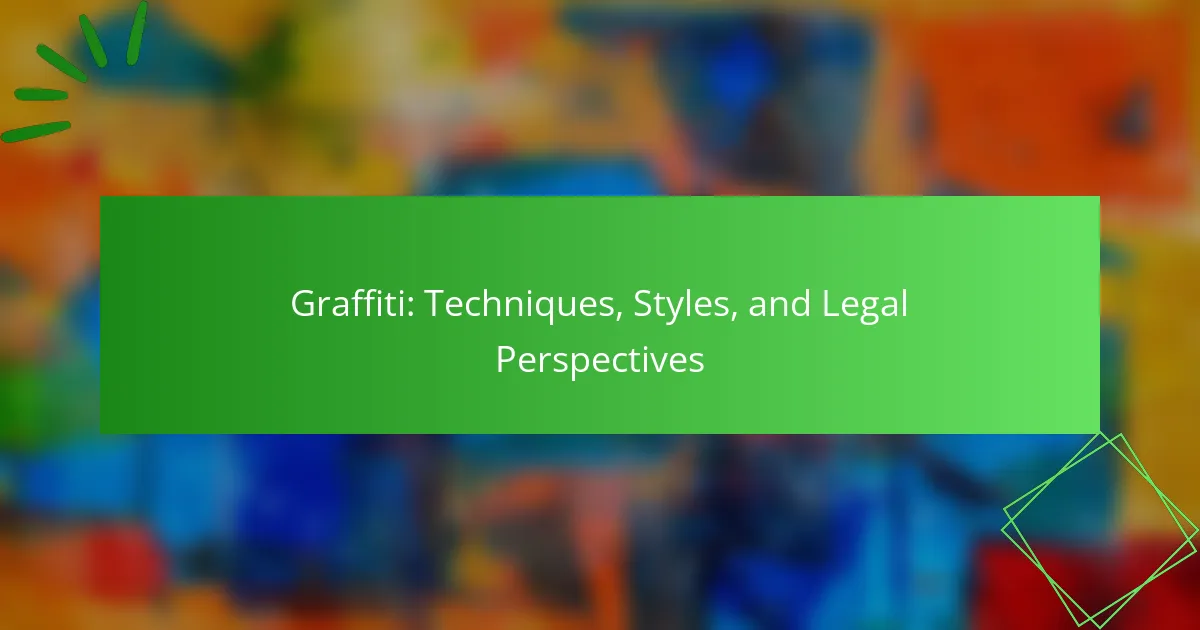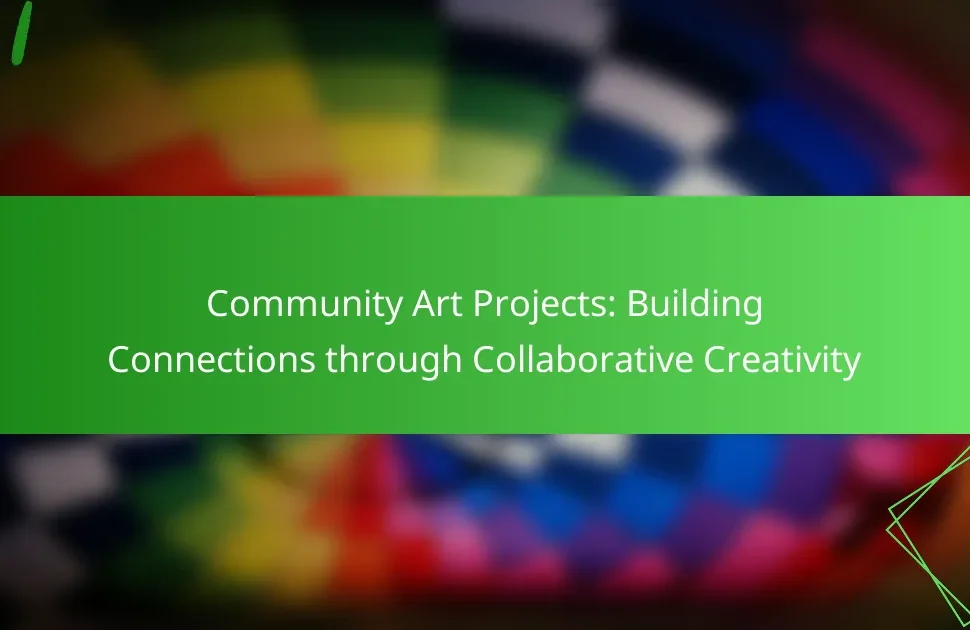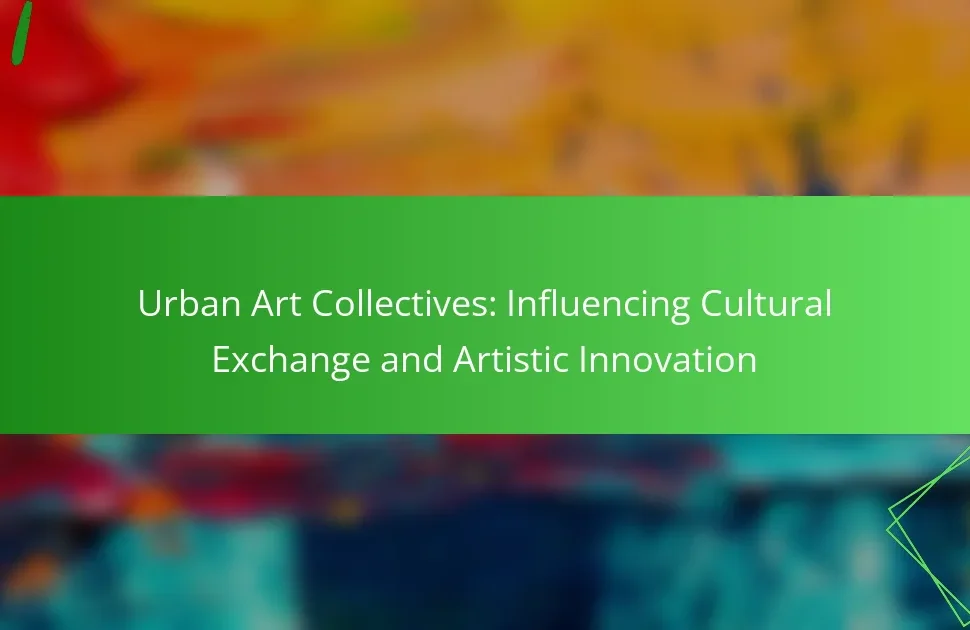Graffiti is a dynamic form of artistic expression that encompasses various techniques and styles. This article explores primary techniques like tagging, throw-ups, and murals, alongside popular styles such as stencils and pieces. It also examines the legal perspectives that shape graffiti practices and the social commentary it provides on pressing issues. Finally, we will discuss the economic implications of graffiti in urban environments and offer guidance for aspiring artists.
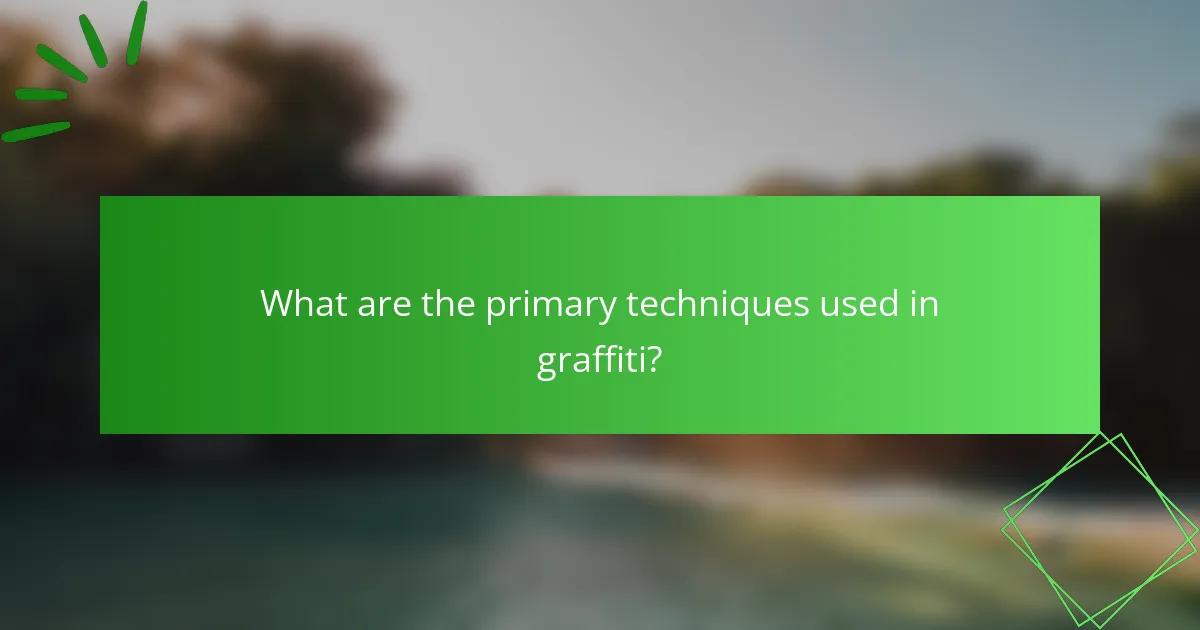
What are the primary techniques used in graffiti?
The primary techniques used in graffiti include tagging, throw-ups, and murals. Tagging involves simple signatures or symbols, while throw-ups are more elaborate, often bubble-style letters. Murals are large-scale artworks that can convey complex messages. Each technique reflects the artist’s style and intent.
How does spray paint application vary among artists?
Spray paint application varies among artists based on individual style, technique, and intended effect. Some artists favor precision, using stencils for intricate designs, while others prefer freehand techniques for a more spontaneous look. Unique attributes include color blending methods and layering techniques, which can significantly impact the final artwork. Additionally, legal perspectives influence application choices, as public spaces often require a more discreet approach to avoid legal repercussions.
Which tools are essential for creating graffiti art?
Essential tools for creating graffiti art include spray paint, markers, stencils, and protective gear. Spray paint offers vibrant colors and quick application, while markers allow for detailed work. Stencils enable consistent designs, and protective gear ensures safety during the process.
What role does stenciling play in graffiti techniques?
Stenciling is a crucial technique in graffiti, allowing for precision and speed. It enables artists to create intricate designs quickly, making it ideal for large-scale pieces. Stencils also facilitate repeatability, allowing artists to replicate images consistently across different locations. This method enhances the visual impact of graffiti while minimizing the time spent on each piece, especially in environments where stealth is necessary. Additionally, the use of stencils can create a unique aesthetic that distinguishes an artist’s style within the broader graffiti culture.
How do different surfaces influence graffiti techniques?
Different surfaces significantly influence graffiti techniques, affecting the application, durability, and overall aesthetic. Smooth surfaces like metal or glass allow for precise lines and detailed work, while rough surfaces such as brick or concrete provide texture that can enhance the visual impact.
Spray paint is commonly used on smooth surfaces, enabling clean finishes and vibrant colors. Conversely, rough surfaces may require thicker applications or different tools, such as rollers or brushes, to achieve desired effects. The choice of surface can also dictate the longevity of the artwork; certain materials may weather faster than others, impacting the artist’s technique and intention.
Additionally, environmental factors like humidity and temperature can further affect how paint adheres to a surface, influencing the final outcome. Understanding these dynamics helps artists select appropriate surfaces for their intended graffiti styles.
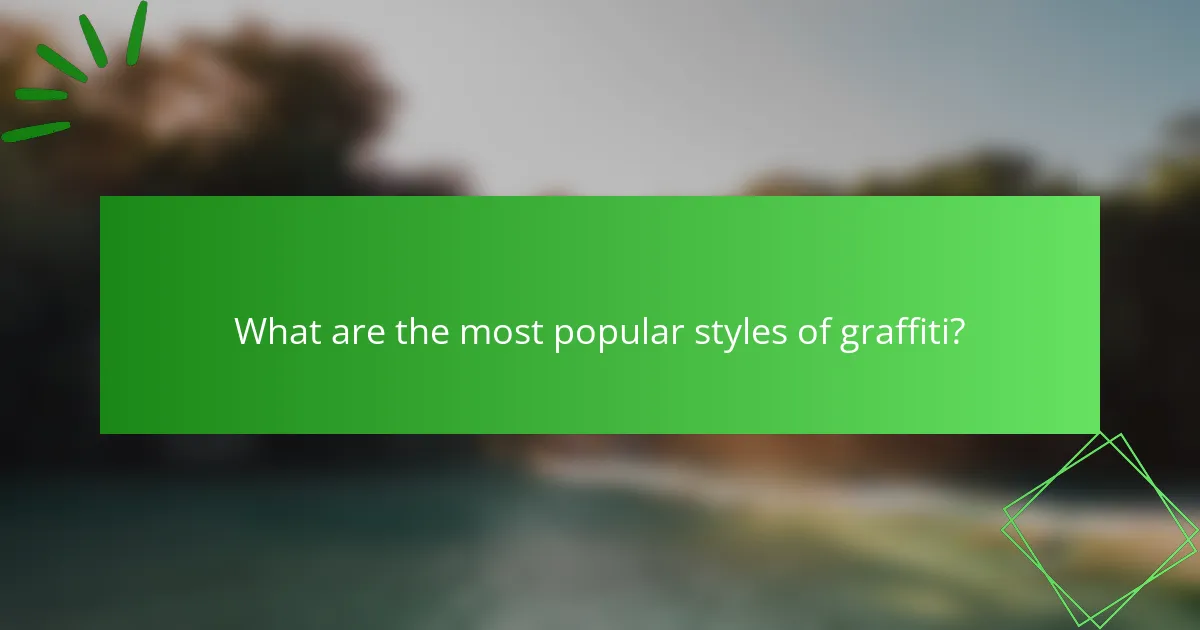
What are the most popular styles of graffiti?
The most popular styles of graffiti include tags, throw-ups, pieces, stencils, and murals. Each style showcases unique techniques and artistic expressions, appealing to different audiences.
Tags are the simplest form, often consisting of a stylized signature. Throw-ups are more elaborate, featuring bubble letters and quick execution. Pieces are detailed murals that require more time and skill. Stencils use pre-made designs for quick application, while murals are large-scale artworks that can transform public spaces.
These styles reflect the diversity and creativity within graffiti culture, highlighting both individual expression and community engagement.
How does street art differ from traditional graffiti?
Street art is typically more organized and often commissioned, while traditional graffiti is often spontaneous and unapproved. Street art uses various techniques like stenciling and mural painting, focusing on artistic expression. Traditional graffiti emphasizes tagging and quick execution, often lacking in artistic intent. The legal perspectives differ significantly; street art can be legal and celebrated, while graffiti may be seen as vandalism.
What are the characteristics of tag-style graffiti?
Tag-style graffiti is characterized by its quick, bold lettering and often includes the artist’s name or initials. This style typically features vibrant colors and simplified designs, making it easily recognizable. Tagging serves as a form of personal expression and territorial marking within urban environments. The unique attribute of tag-style graffiti is its emphasis on speed and spontaneity, allowing artists to create their work rapidly in public spaces.
Which unique styles are emerging in urban areas?
Emerging styles in urban graffiti include 3D lettering, abstract forms, and mixed media techniques. These styles reflect cultural diversity and technological advancements.
3D lettering creates depth and perspective, enhancing visual impact. Abstract forms often incorporate vibrant colors and shapes, pushing creative boundaries. Mixed media techniques combine traditional spray paint with materials like stickers and stencils, resulting in unique expressions.
Legal perspectives increasingly influence graffiti’s evolution, with some cities recognizing it as art rather than vandalism. This shift encourages artists to explore innovative styles while navigating legal frameworks.

How do legal perspectives shape graffiti practices?
Legal perspectives significantly influence graffiti practices by defining the boundaries of acceptable expression. Laws vary by region, impacting artists’ choices and techniques. For instance, in cities with strict anti-graffiti laws, artists may opt for legal walls or commissioned murals to avoid penalties. Conversely, areas with more lenient regulations may encourage spontaneous street art, fostering diverse styles and techniques. Legal consequences, such as fines or imprisonment, also shape the motivation behind graffiti, pushing some artists toward anonymity and risk-taking. Ultimately, the legal framework surrounding graffiti plays a crucial role in determining how, where, and why artists create their work.
What are the laws governing graffiti in various regions?
Laws governing graffiti vary significantly by region, often classifying it as vandalism or art. In many areas, graffiti is illegal without permission, leading to fines or criminal charges. Some cities have designated legal walls, promoting artistic expression while regulating unauthorized tagging. Enforcement and penalties depend on local ordinances and community attitudes toward graffiti.
How do artists navigate legal challenges while creating graffiti?
Artists navigate legal challenges in graffiti through awareness of local laws, seeking permission, and understanding copyright issues. They often collaborate with property owners to gain legal access, reducing the risk of vandalism charges. Additionally, some artists utilize public art initiatives to legitimize their work. Legal knowledge empowers artists to create within boundaries while expressing their creativity.
What are the consequences of illegal graffiti?
Illegal graffiti can lead to significant legal and social consequences. It often results in criminal charges, fines, and community backlash. Property owners may face increased insurance costs, while municipalities spend millions on cleanup efforts. Additionally, illegal graffiti can contribute to urban decay, reducing property values and deterring investment in affected areas. The negative perception of graffiti can overshadow its artistic potential, limiting opportunities for legitimate street artists.
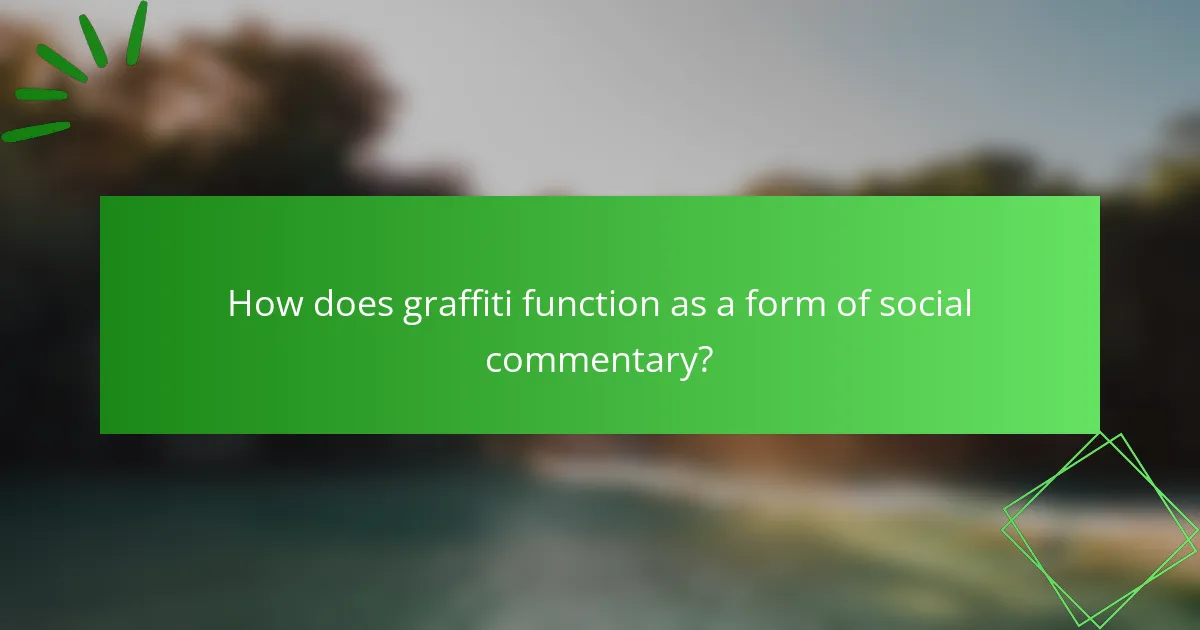
How does graffiti function as a form of social commentary?
Graffiti serves as a powerful form of social commentary by expressing dissent, highlighting social issues, and challenging authority. Artists use techniques like stenciling and mural painting to convey messages that resonate with communities. For instance, graffiti can address topics such as inequality, political unrest, and environmental concerns, making it a unique medium for public discourse. The ephemeral nature of graffiti often amplifies its impact, as it captures the urgency of societal issues in real-time.
What messages are commonly conveyed through graffiti?
Graffiti commonly conveys messages of social commentary, political dissent, personal expression, and cultural identity. Artists often use this medium to challenge authority, highlight social issues, or celebrate community pride. The unique styles and techniques employed can amplify these messages, making them accessible to a wider audience. For example, vibrant colors and bold lettering can draw attention to urgent topics, while intricate designs may reflect personal narratives or local histories.
How do cultural influences shape graffiti themes?
Cultural influences significantly shape graffiti themes by reflecting societal values, political statements, and community identities. Different regions showcase unique styles that resonate with local culture, history, and issues. For example, street art in urban areas often addresses social justice, while rural graffiti may emphasize nature and local heritage. Additionally, global movements like hip-hop culture have popularized certain techniques and motifs, creating a shared language among artists. The evolution of graffiti is thus a dialogue between the artist’s experience and the cultural context they inhabit.
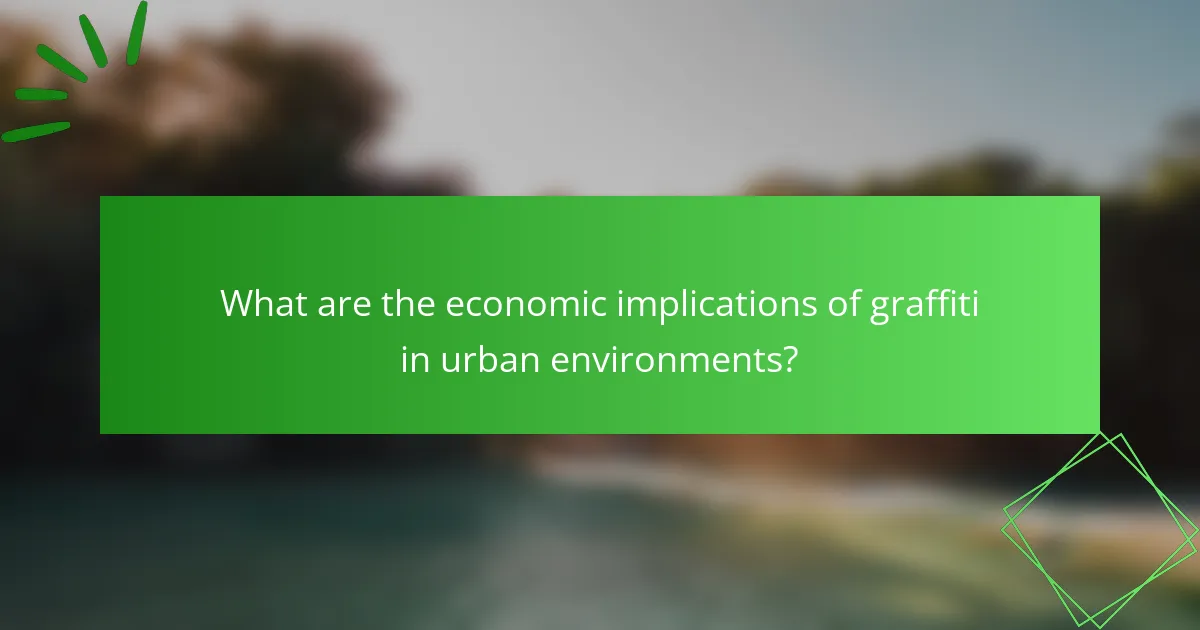
What are the economic implications of graffiti in urban environments?
Graffiti can have significant economic implications in urban environments, influencing property values and tourism. Positive perceptions of graffiti can enhance neighborhood appeal, attracting businesses and visitors. Conversely, vandalism can lead to increased cleanup costs and decreased property values. The balance between artistic expression and legal consequences shapes the economic landscape. As cities grapple with graffiti, they often invest in public art initiatives that can boost local economies.
How does graffiti impact real estate values?
Graffiti can negatively impact real estate values due to perceptions of crime and neglect. Areas with significant graffiti often face decreased demand, leading to lower property prices. Conversely, well-executed graffiti can enhance neighborhood appeal, attracting buyers who value urban art. A study found that homes near street art can see a price increase of up to 20%. The legal perspective on graffiti varies, influencing its acceptance and impact on property values.
What role does graffiti play in urban tourism?
Graffiti enhances urban tourism by attracting visitors interested in street art and local culture. It serves as a unique expression of community identity and creativity. Tourists often seek out vibrant murals and graffiti hotspots, which can lead to increased foot traffic and economic benefits for local businesses. Furthermore, guided tours focusing on graffiti art provide educational insights into techniques and styles, enriching the tourist experience. Cities that embrace graffiti often see it as a form of legal public art, fostering a positive perception among visitors.
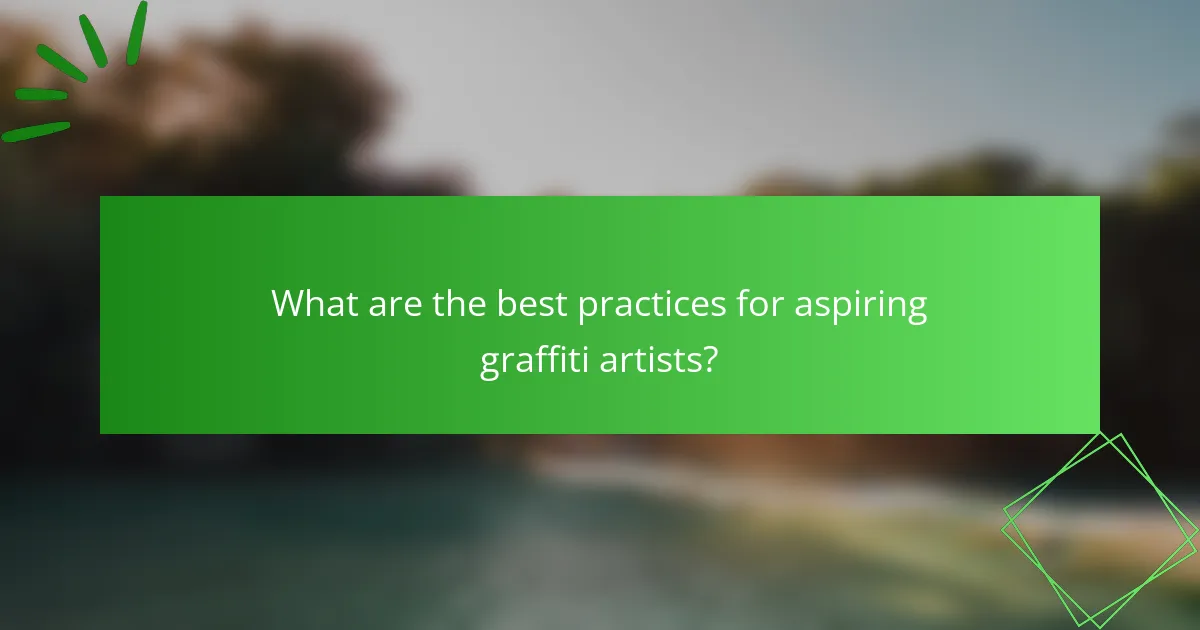
What are the best practices for aspiring graffiti artists?
Aspiring graffiti artists should focus on mastering techniques, developing unique styles, and understanding legal perspectives. Practice various spray paint techniques like blending, layering, and stenciling. Explore different styles such as wildstyle, bubble letters, and realism to find your niche. Study local laws and obtain necessary permissions to avoid legal issues. Networking with other artists and participating in community events can enhance skills and visibility.
How can artists develop their unique style?
Artists can develop their unique style by experimenting with techniques, influences, and personal expression. They should explore various graffiti techniques, such as tagging, stenciling, and mural painting, to find what resonates with them. Observing diverse styles from different artists can inspire new ideas and approaches.
Additionally, incorporating personal experiences and cultural backgrounds into their work can enhance originality. Legal perspectives, including understanding local laws and regulations, can also influence artistic choices, encouraging creativity within boundaries. Regular practice and seeking feedback from peers can further refine their style.
What common mistakes should new graffiti artists avoid?
New graffiti artists should avoid common mistakes like neglecting legal considerations, skipping practice, and failing to develop a unique style. Understanding local laws is crucial to avoid legal issues. Consistent practice enhances skill and creativity. Artists should also focus on originality to stand out in a competitive field.
How can artists effectively promote their work in the graffiti community?
Artists can effectively promote their work in the graffiti community by engaging with local events, collaborating with other artists, and utilizing social media platforms. Building a network is crucial for visibility and support.
Participating in community art shows or graffiti festivals enhances exposure. Collaborations with other artists can lead to innovative projects, attracting diverse audiences. Social media serves as a powerful tool for sharing artwork, connecting with followers, and showcasing behind-the-scenes processes.
Additionally, understanding legal perspectives can help artists navigate public spaces responsibly. Respecting local laws fosters goodwill within the community and encourages more opportunities for public art projects.
